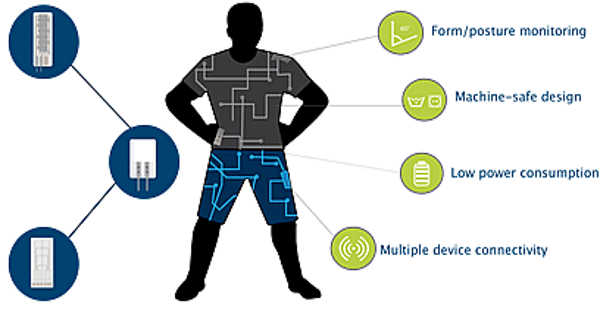With the growing demand for flexible wearable electronics, researchers have looked into flexible energy storage devices such as flexible supercapacitors, which are lightweight, safe, and easy to integrate with other devices. Printing electronics has proven to be a cost-effective, simple, and scalable method of producing FSCs. Researchers examine printed FSCs in terms of their ability to create functional inks, design printable electrodes, and integrate functions with other electronic devices.
With the dramatic growth of smart devices that can exchange data with other devices over the internet using embedded sensors, software, and other technologies, demand for flexible wearable electronics has skyrocketed. As a result, researchers have focused on flexible energy storage devices, such as flexible supercapacitors (FSCs), which are lightweight, safe, and easy to integrate with other devices. FSCs have a high power density as well as quick charge and discharge rates.
Researchers provide a review of printed FSCs in terms of the ability to formulate functional inks, design printable electrodes, and integrate functions with other electronic devices.
Printing electronics, or making electronics devices and systems using traditional printing techniques, has proven to be a cost-effective, simple, and scalable strategy for producing FSCs. Traditional micromanufacturing techniques can be costly and time-consuming.
Researchers from Wuhan University and Hunan University review printed FSCs in terms of their ability to formulate functional inks, design printable electrodes, and integrate functions with other electronic devices in AIP Publishing’s Applied Physics Reviews.
Printed FSCs are typically created by printing functional inks on flexible substrates using traditional organic and inorganic electrode materials. Because of the thin film structure, these printed devices can be bent, stretched, and twisted to a specific radius without compromising electrochemical function.
Furthermore, the supercapacitor’s rigid current collector components can be replaced with flexible printed parts. To fabricate the printed FSCs, various printing techniques such as screen printing, inkjet printing, and 3D printing have been well established.

Flexible and wearable electronics, such as flexible smart gloves, graphene artificial throats, and folding phones, have recently piqued the interest of scientists and engineers alike due to their ability to be stretched, compressed, twisted, bent, and deformed into arbitrary shapes. To significantly accelerate the commercialization of such a laboratory-level flexible device in order to better build the internet of things (IoT),
“The development of miniaturized, flexible, and planar high-performance electrochemical energy storage devices is an urgent requirement to promote the rapid development of portable electronic devices in everyday life,” author Wu Wei stated. “In the future, we can imagine using any printer in our lives to print a supercapacitor to charge a mobile phone or smart wristband at any time.”
Two principles were discovered by the researchers for printable ink formulations. To begin, it is critical to include fewer ineffective additives, better conductive binders, and excellent dispersion electrode materials when selecting ink components. Second, in order to produce high-quality prints, the ink must have a suitable viscosity and rheology.
Printable functional materials like graphene and pseudocapacitive materials make excellent core components for printed supercapacitors. Because printed electronics are flexible and inexpensive, they can be used to make solar cells, flexible OLED displays, transistors, RFID tags, and other integrated smart devices. This opens the door to a plethora of other applications, such as smart textiles, intelligent packaging, and smart labels.
Flexible hybrid electronics (FHE) is a rapidly emerging field with significant commercial potential, driving investments in R&D within the electronic manufacturing industry. FHE is based on two major threads: printed electronics (PE) and other advanced deposition/assembly processes, as well as semiconductor devices and packaging technologies. FHE devices are an obvious link between the silicon-driven IC industry and the PE industry. Printing is an additive process that has branched out into electronic applications, where electronic materials are selectively deposited using electrically functional inks in conjunction with standard printing processes.















